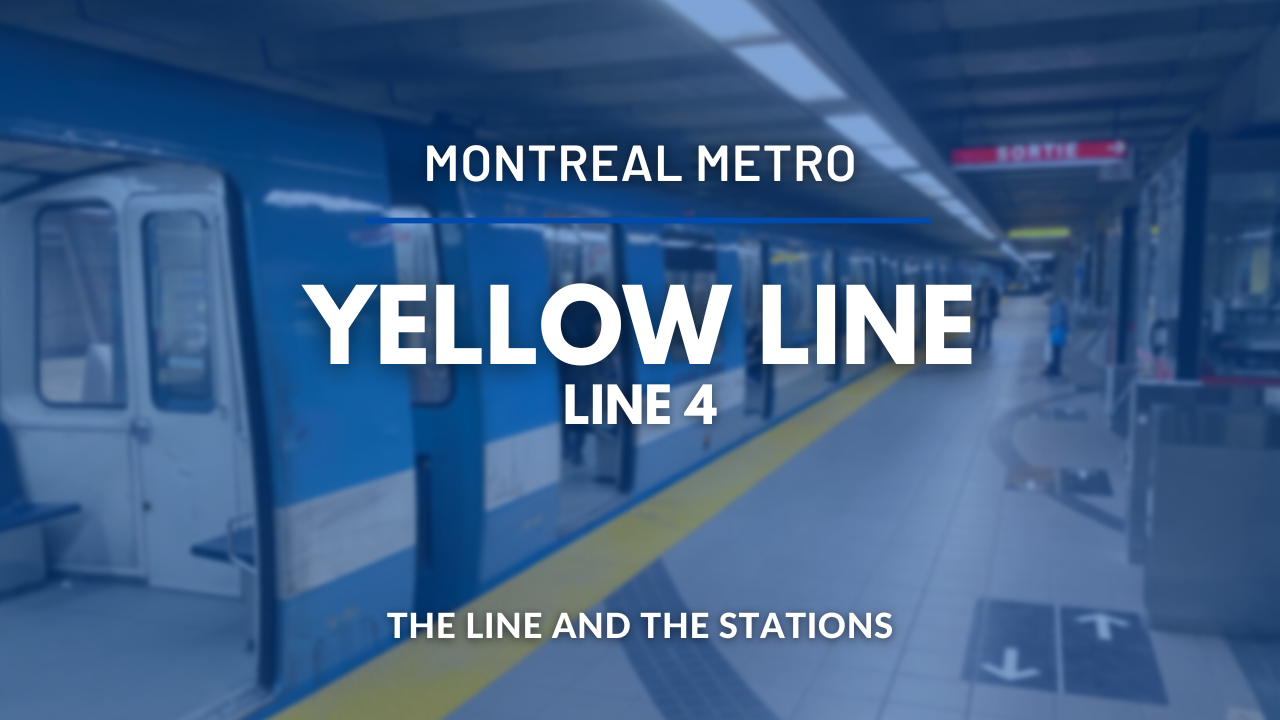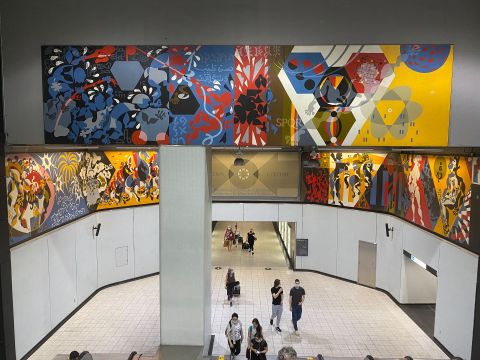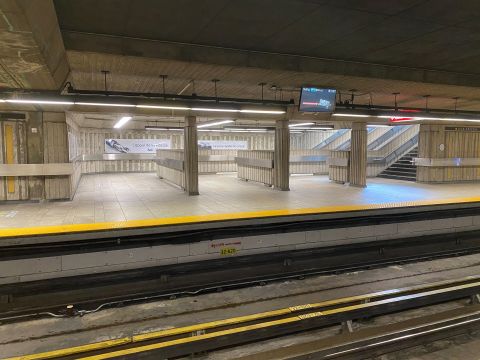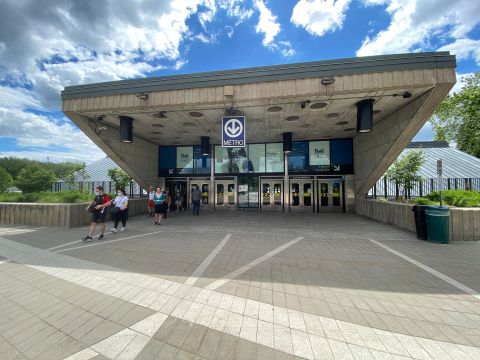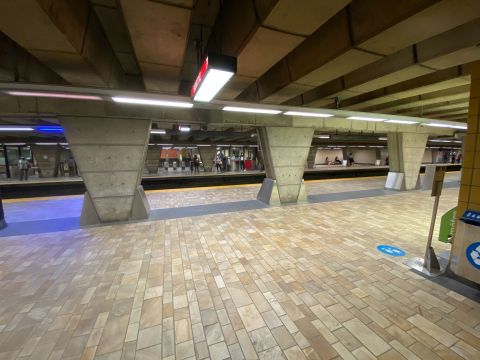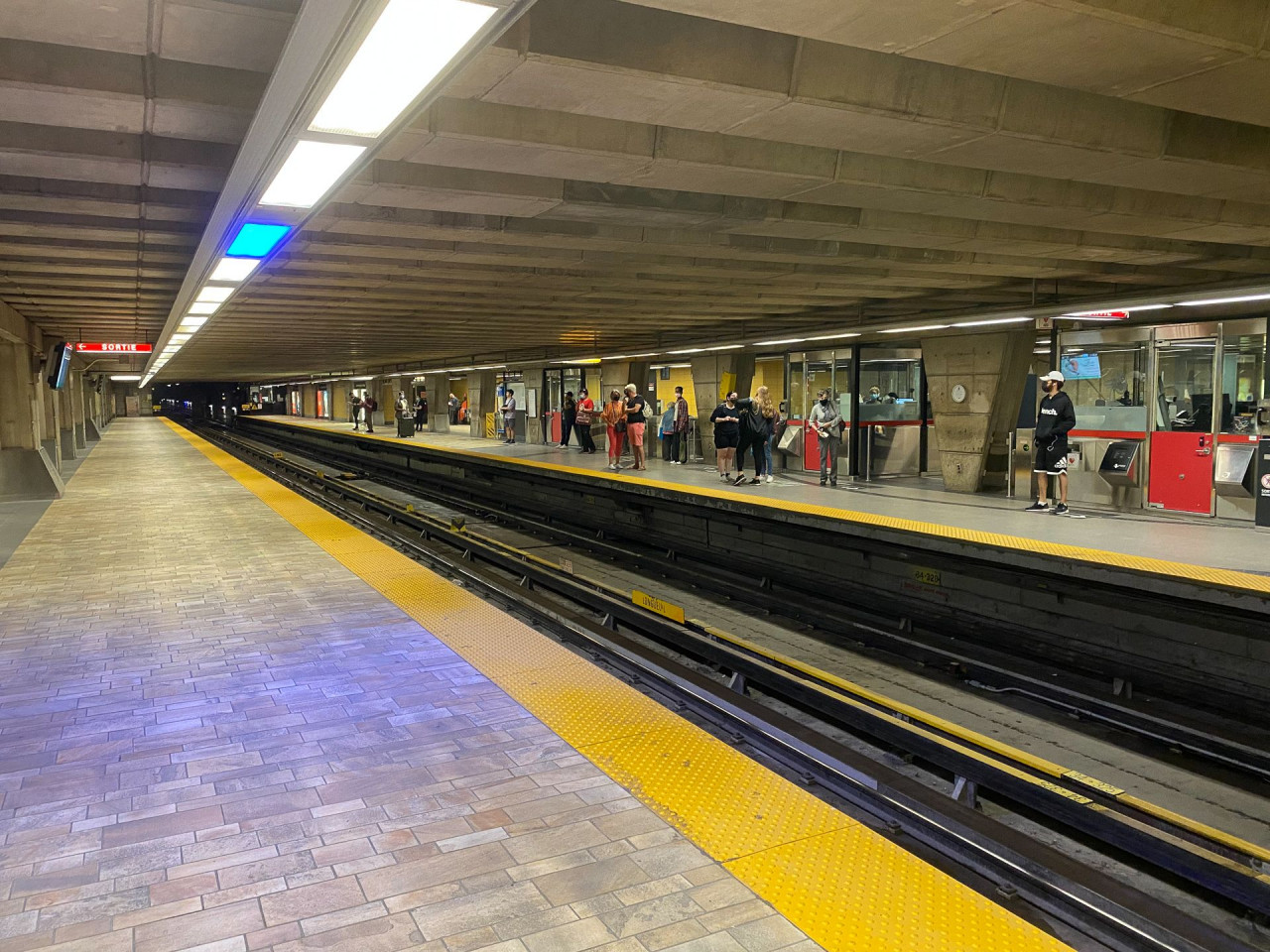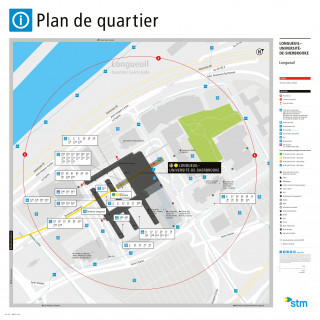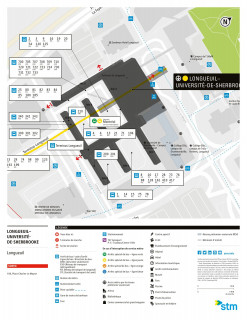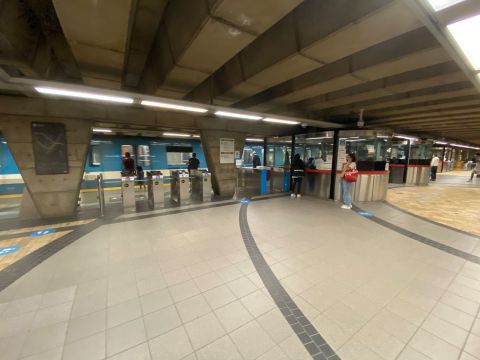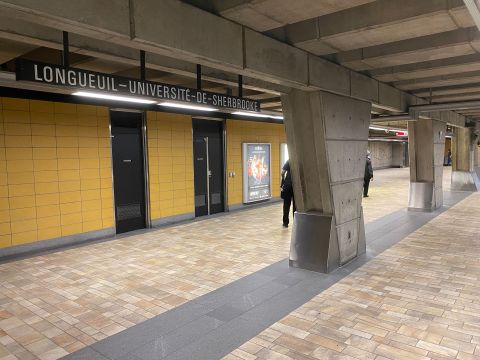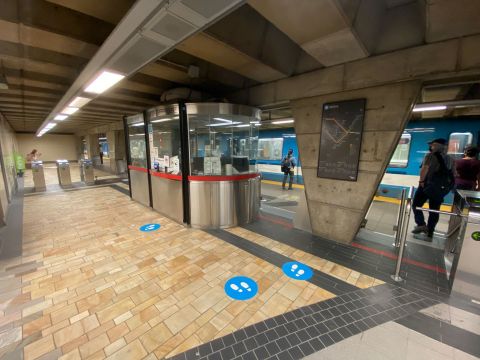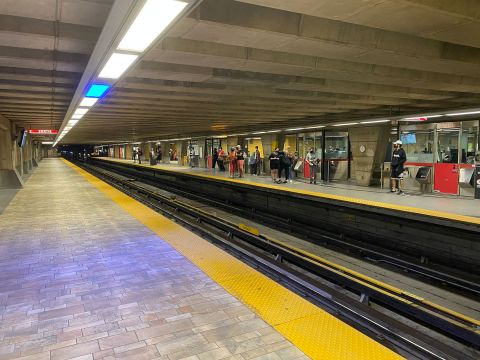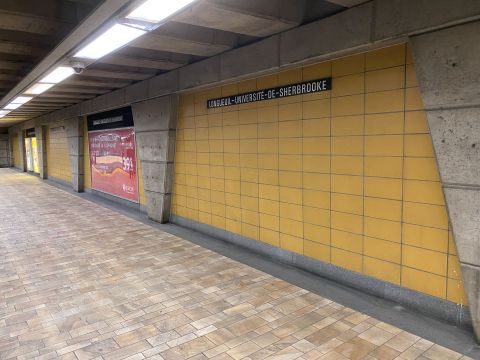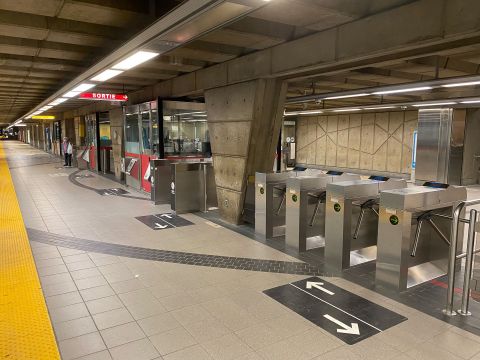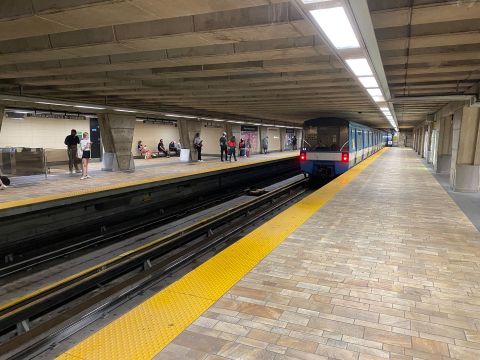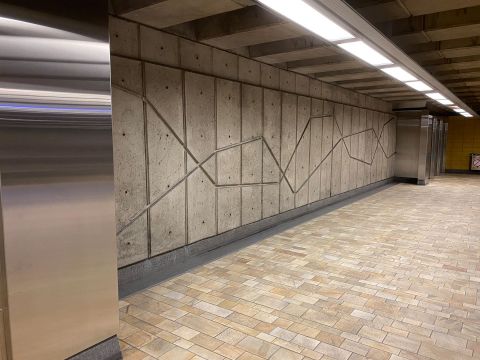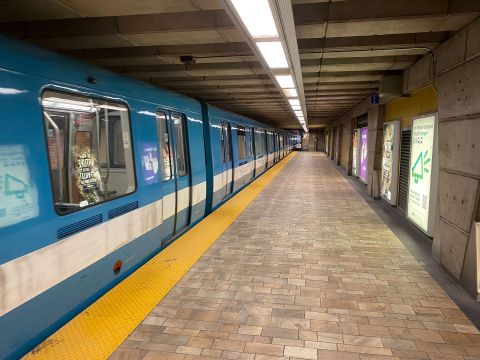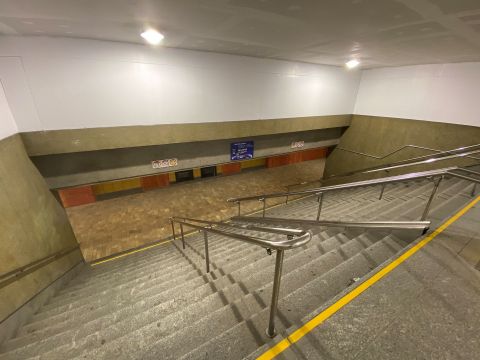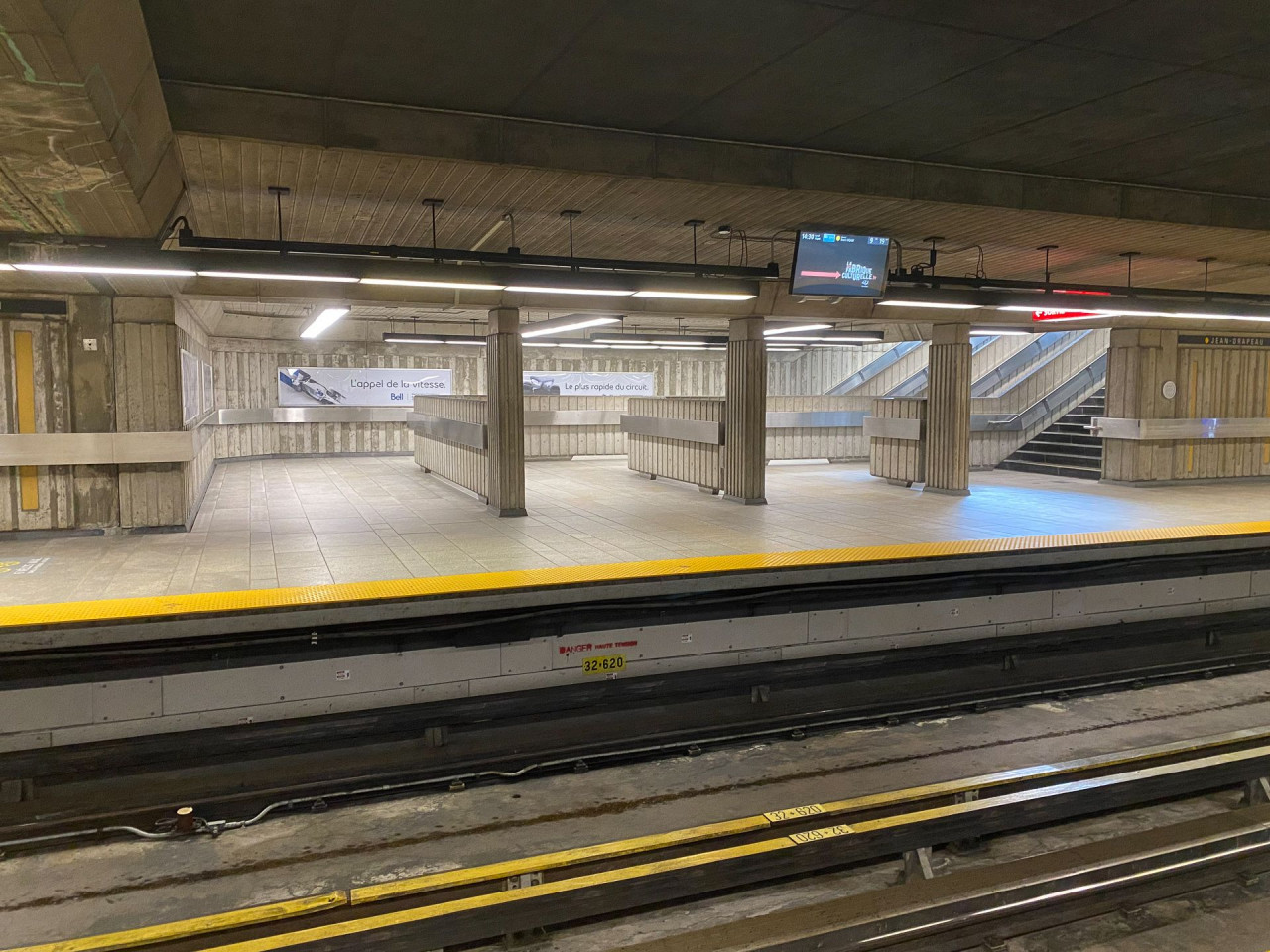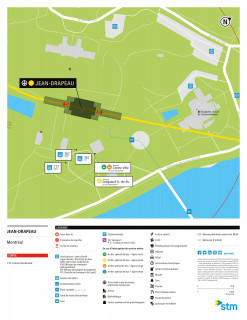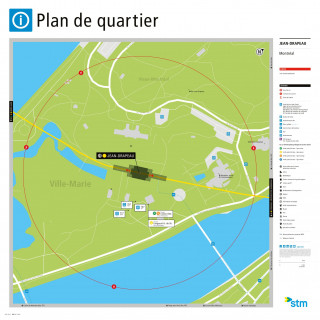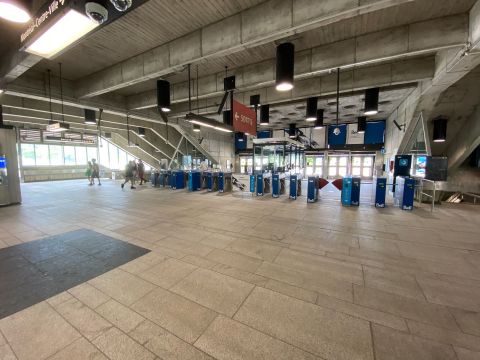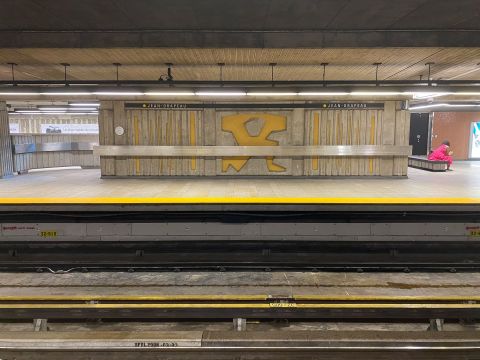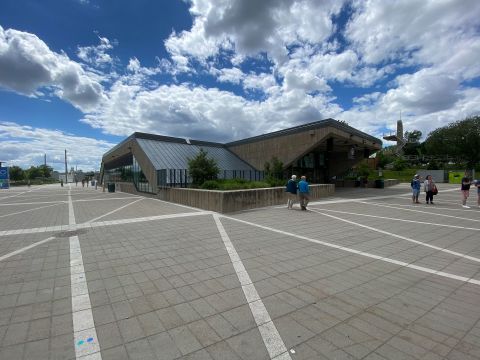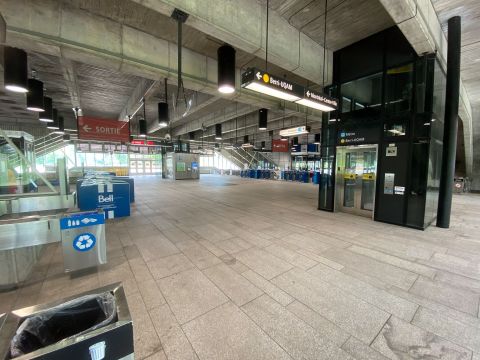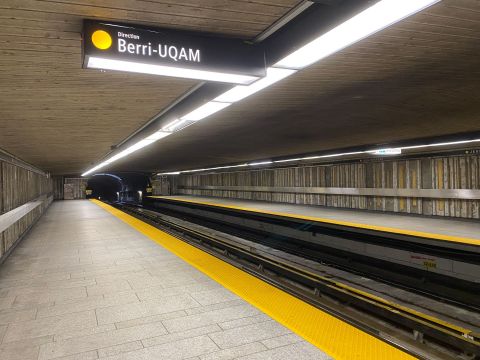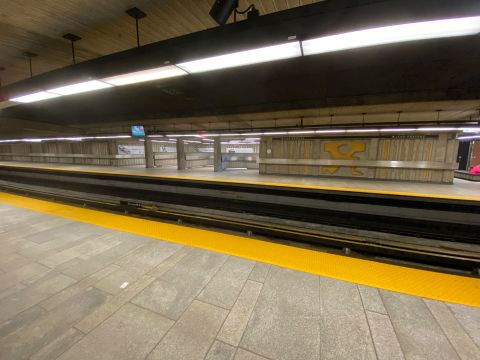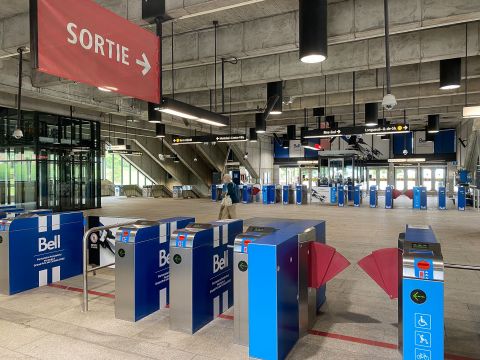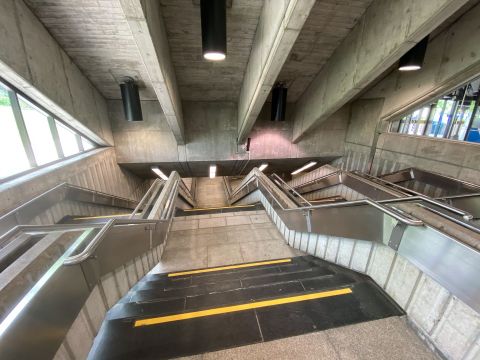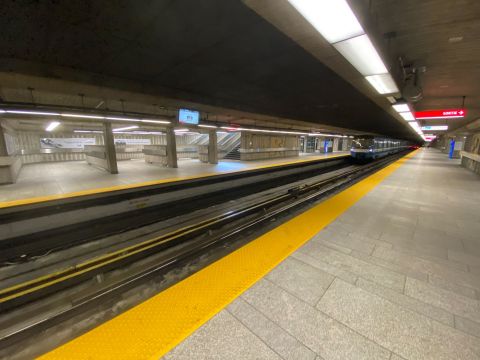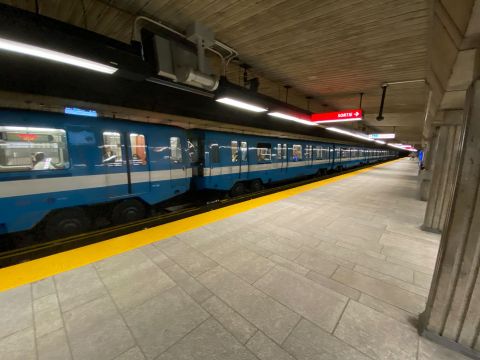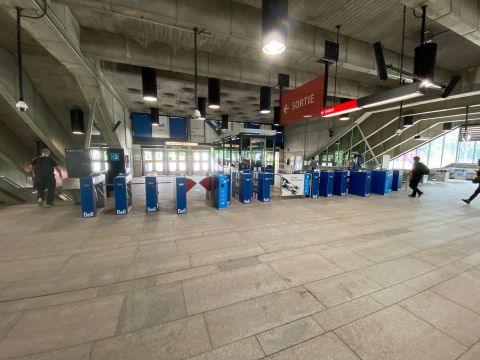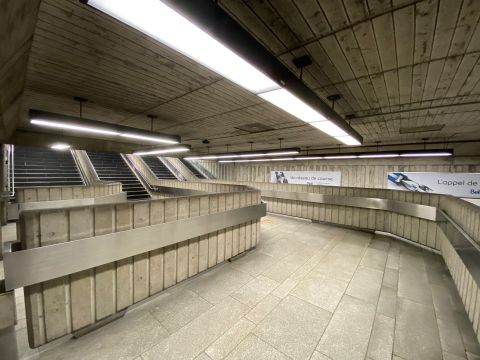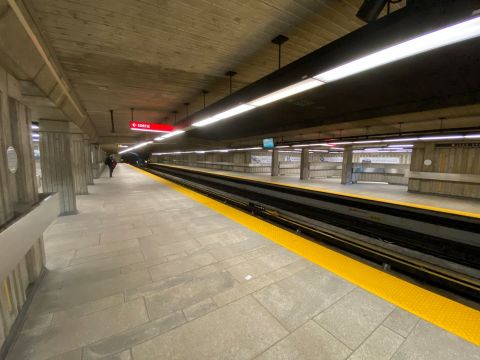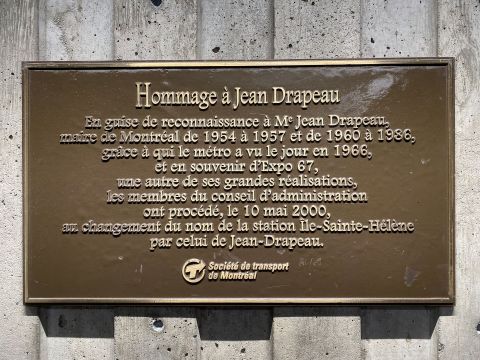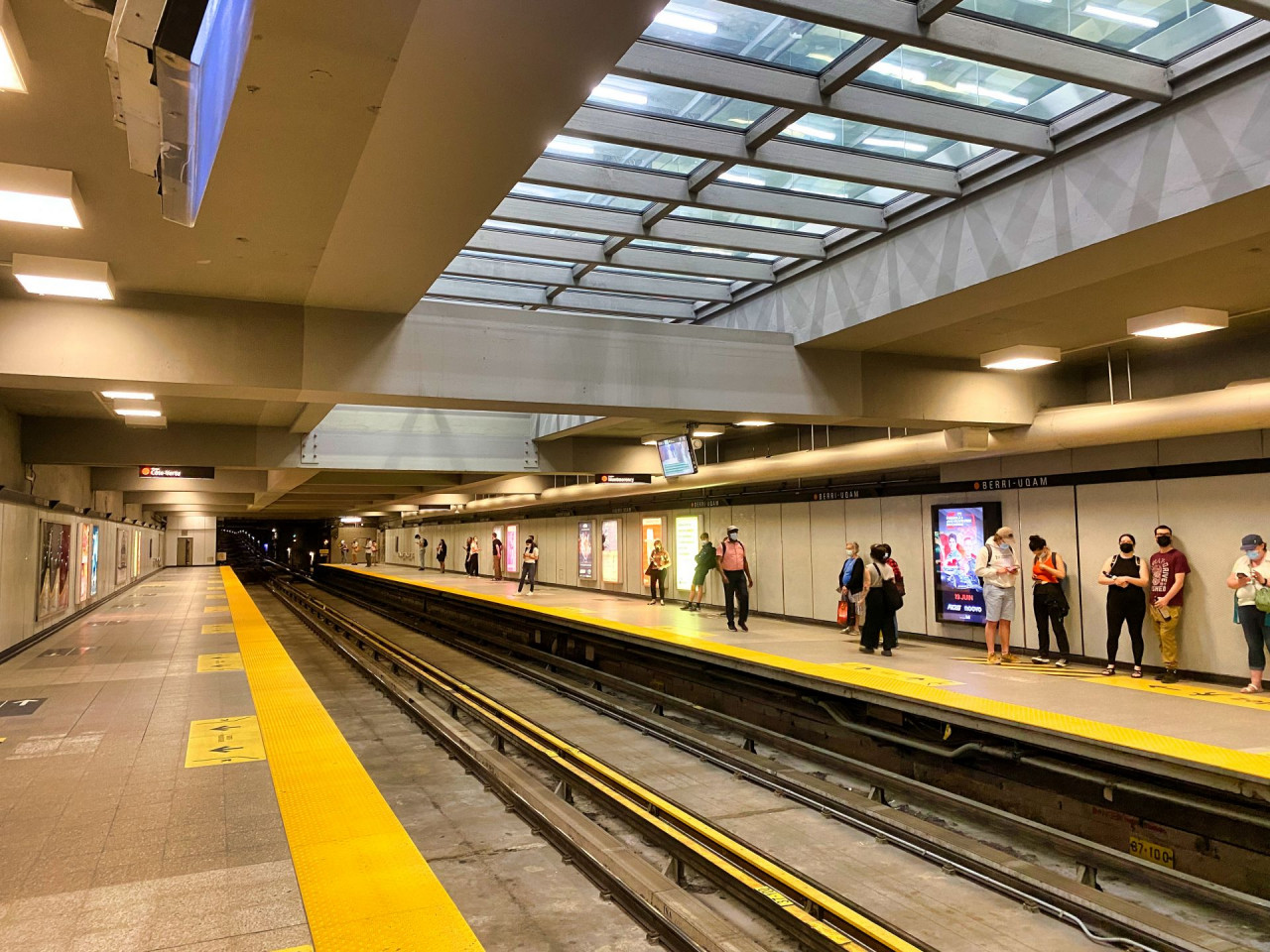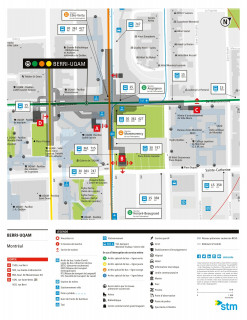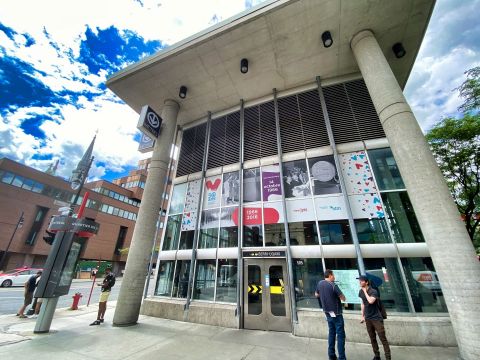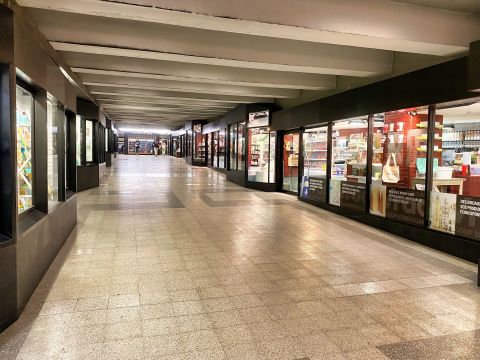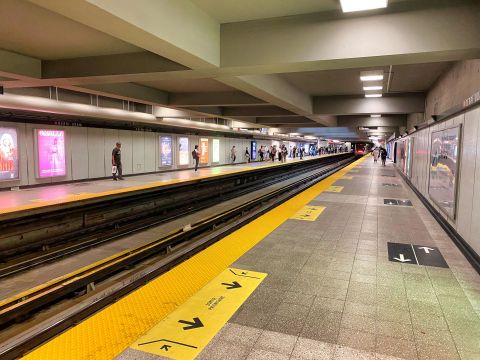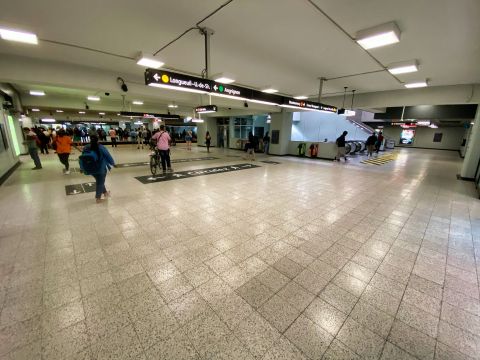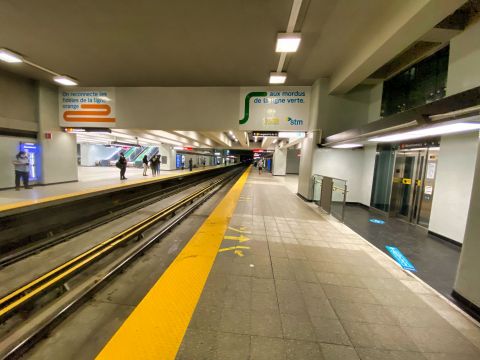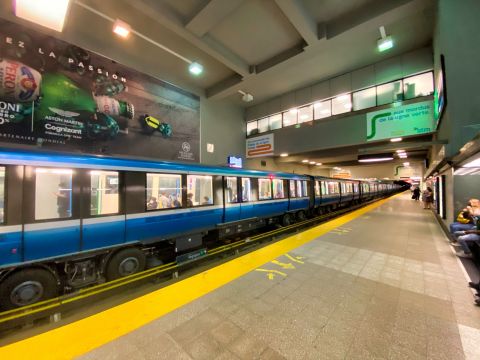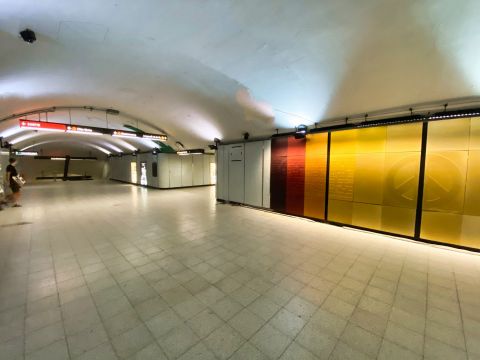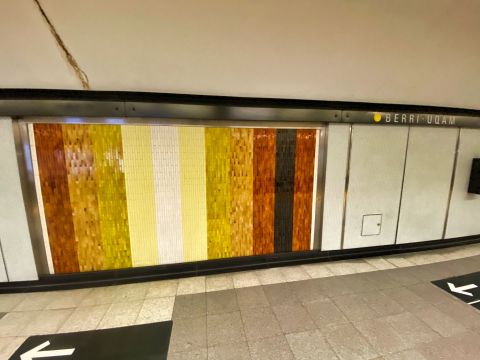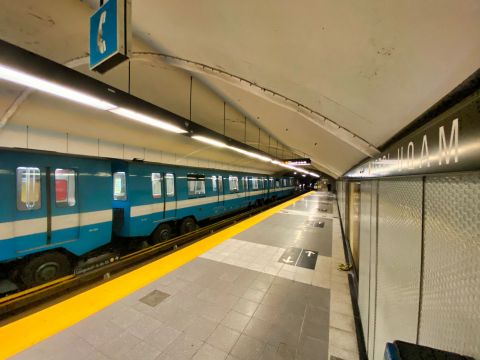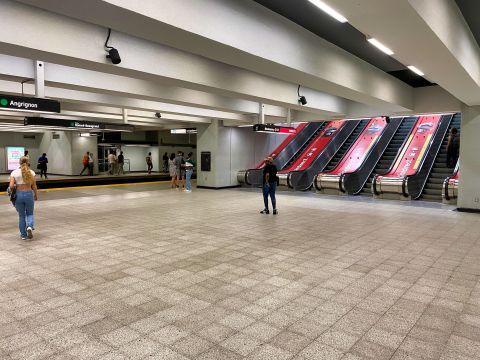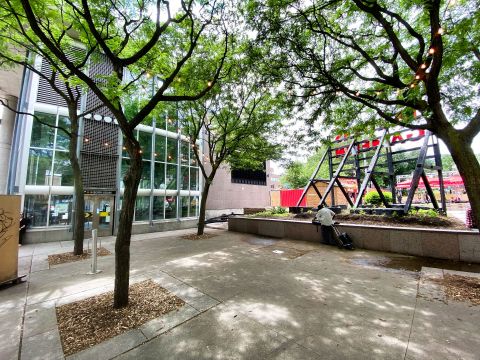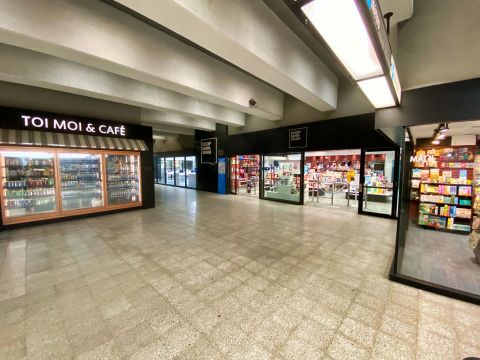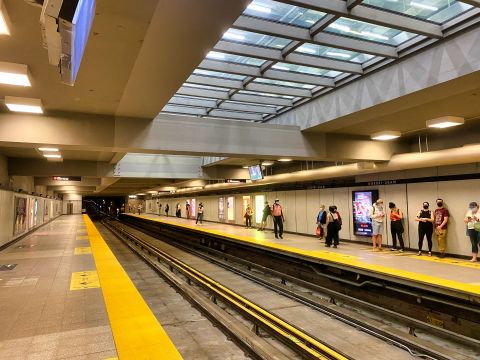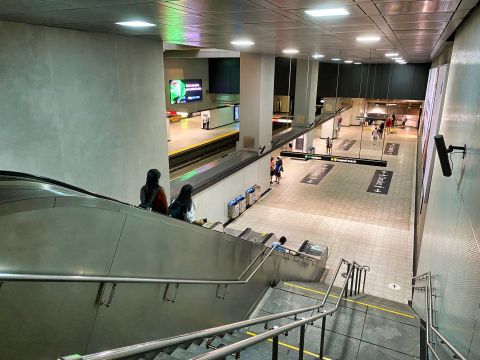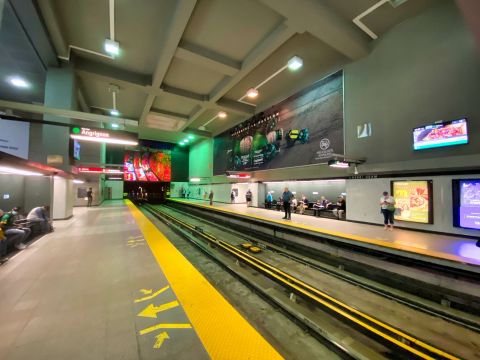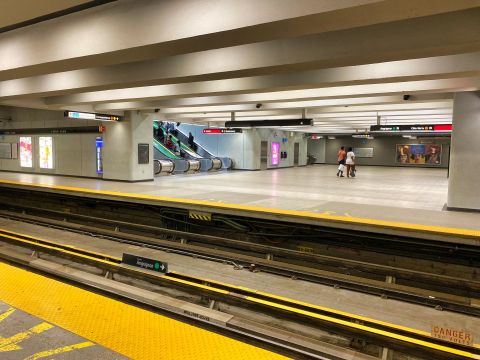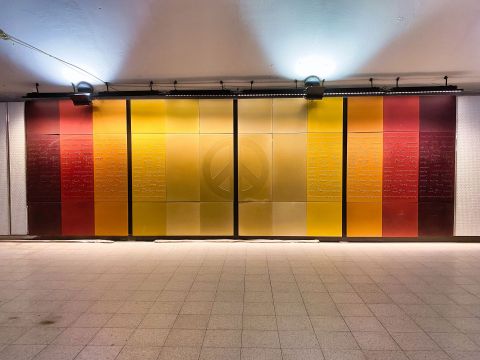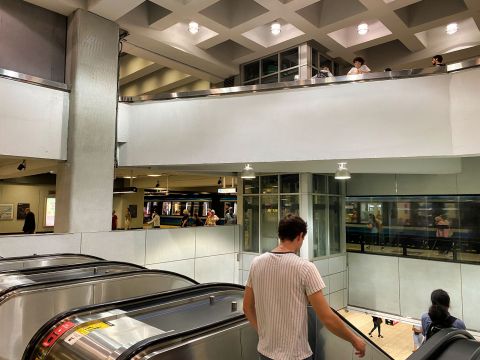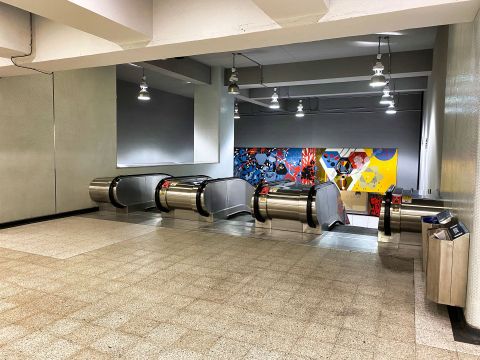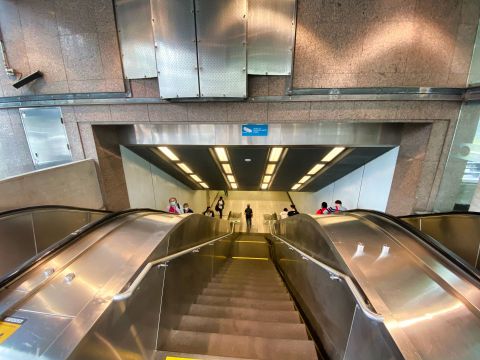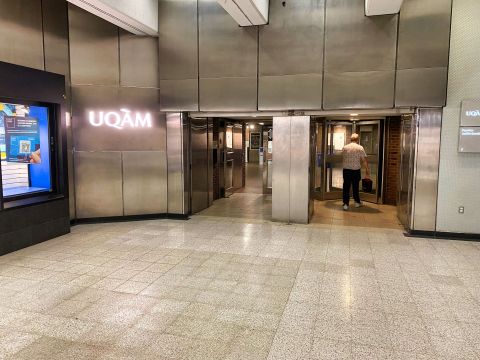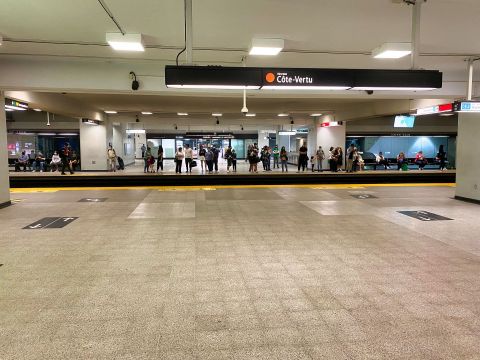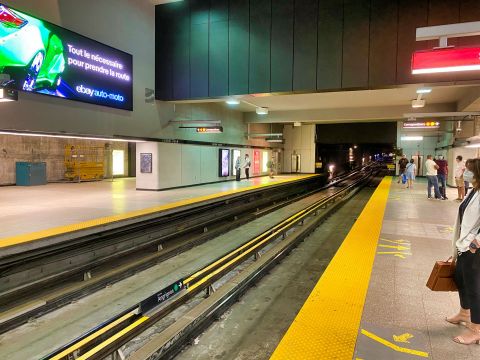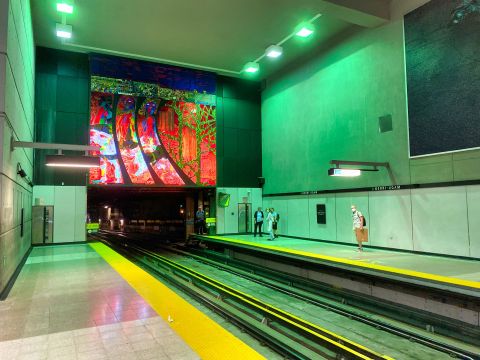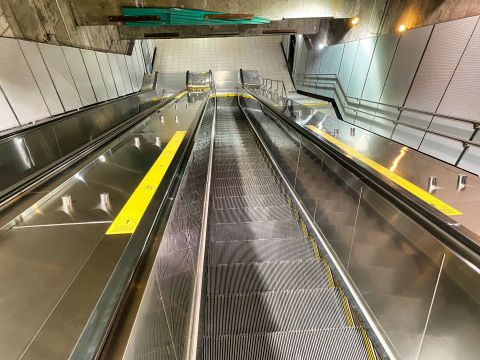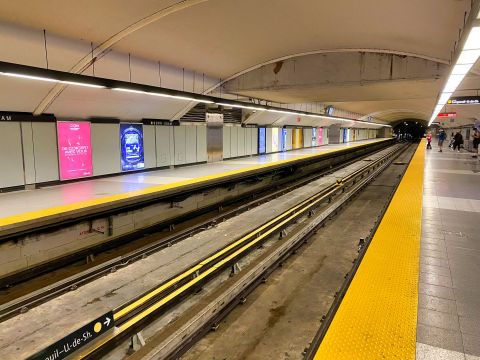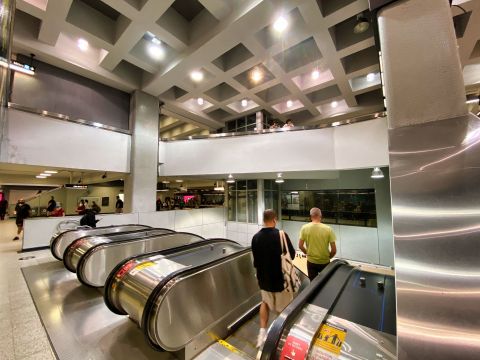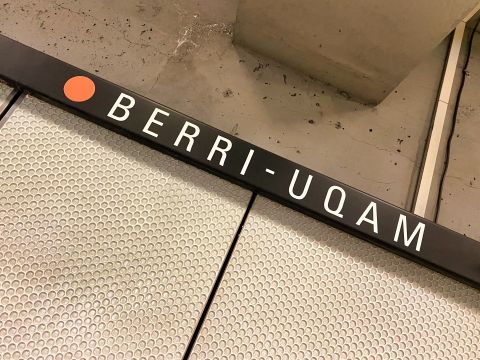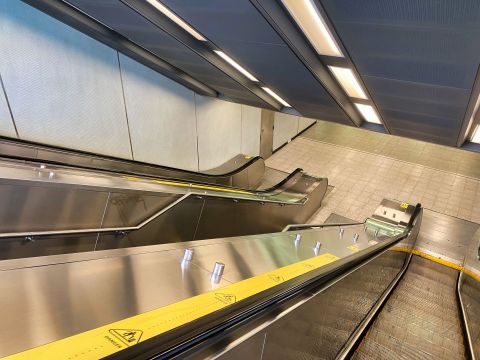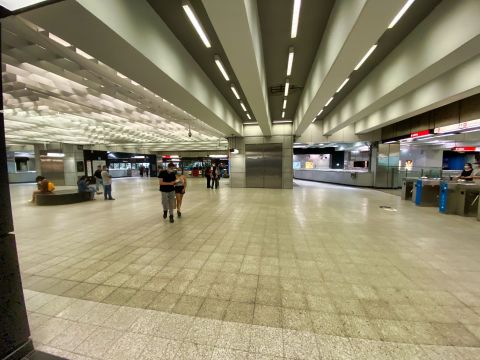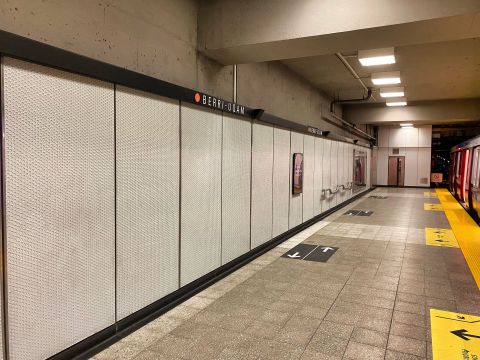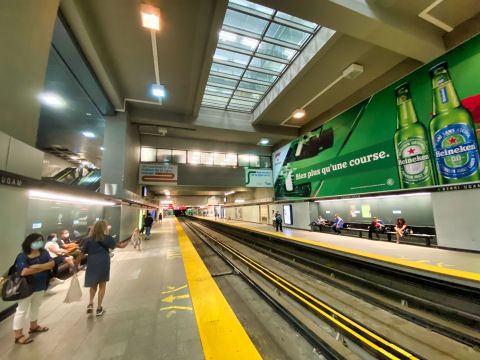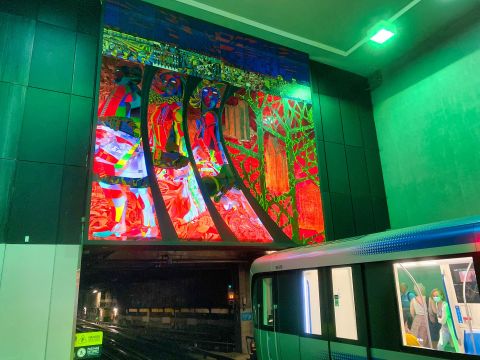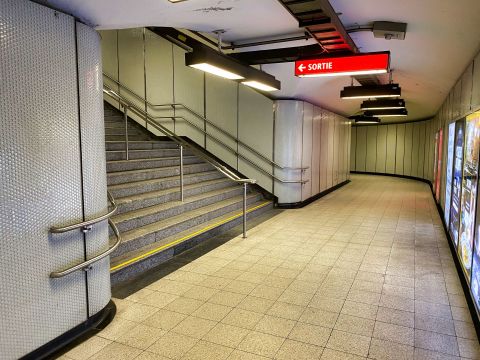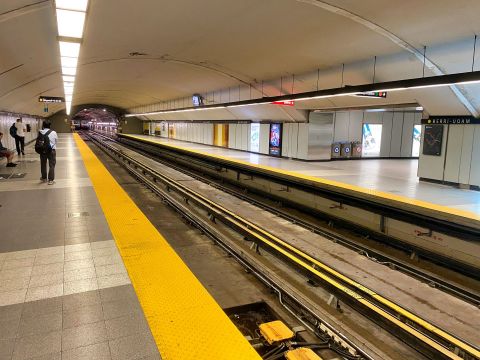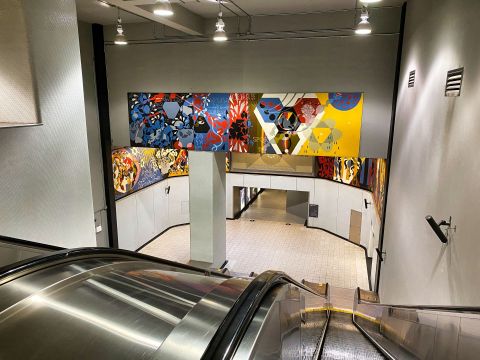Berri-UQAM is the main transfer station of the Montreal Metro, serving all three of the original lines (Green, Orange, Yellow).
The station was originally called Berri-de-Montigny as it was at the corner of Berri and de Montigny streets. However, since the name of de Montigny street changed to de Maisonneuve soon after the opening, the station was going to change its name to Berri-de-Maisonneuve, but since Expo 67 was just about to happen, it was decided to keep the original name in order not to confuse visitors. However, on January 1, 1988, as the Université-de-Montréal station was about to get inaugurated, all major universities that didn't have their name integrated with the station leading to its campuses had them added. Guy station added Concordia to become Guy-Concordia, and Berri-de-Montigny became Berri-UQAM. The name is still in effect today, but many people who used the station before the name change still refer to the station as Berri-de-Montigny.
This station has three levels of platform, and the higher the platform, the vaster it feels, with the Orange line being on top and feeling like the building we are in is of infinite proportions, then under it, there is the Green line which still feels vast compared to other stations but not as much as the Orange line platform, and then Yellow line is the deepest and most intimate.
The inside of the station is grandiose in the sense that it is so big. You can feel this as soon as you enter from the vast entrance on Berri & Sainte-Catherine, even from the outside as it is grandiose with its height and the many windows that are around it. Then, when you reach the concourse, you can see that, in order to accommodate passengers moving, there is a lot of empty space (with the exception of a granite bench), which helps make it look even bigger. There are many escalators to go between the different platforms. Parts of the platforms of the Orange have a view of the stairs going down toward the Green line. Those are the seats in front of the window with orange decals on them.
The volume of the station is very large on the main floor when you enter the station. There are a few stores, the main one was during many years the library "Le Parchemin", which has recently been replaced by a UQAM library. There is also the customer service centre of the STM as well as a few convenience stores located around the station.
There are several points of interest around the station, including Gare d'Autocars de Montréal, which is the intercity bus terminal, the UQAM University, Place Dupuis shopping centre, l'Hôtel des Gouverneurs, Place Emilie-Gamelin square, Theatre St-Denis and M Telus (formerly known as Metropolis) Performing Arts centre.
The station has five entrances: 1500 Berri, 505 Sainte-Catherine East, 850 de Maisonneuve East, 1470 Saint-Denis and 1621 Berri.
In addition to metro transfers, passengers can transfer to intercity buses and the 747 STM bus route among others.
UNIQUE FEATURES
This station, which was where the metro inauguration took place, is the biggest of the network, the only one having 3 lines.
As there isn't a lot of space in the tail tracks behind the yellow line terminus, it is common to see trains on the yellow line switch tracks by going back in reverse from the terminus platform and then coming back in to get passengers by arriving to the platforms in Longueuil-Université-de-Sherbrooke direction in the same way it usually arrives via Jean-Drapeau station.
PUBLIC ARTWORK
The main art attraction in the station is the glass mural over the tunnel leading to Honoré-Beaugrand. It was made by Pierre Gaboriau and Pierre Osterrath and is called 'Hommage aux fondateurs de la ville de Montréal'. It was installed in 1969 after it was given by the Desjardins Group (Caisses Populaires Desjardins). The other main pieces of art are paintings by Robert Lapalme, that are over the stairs leading to the Yellow Line.
